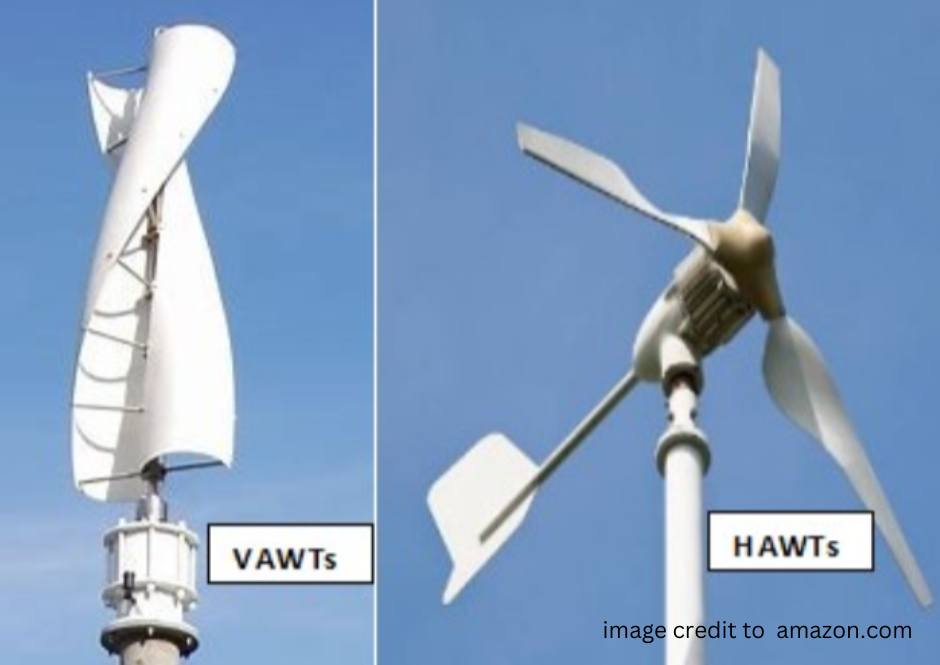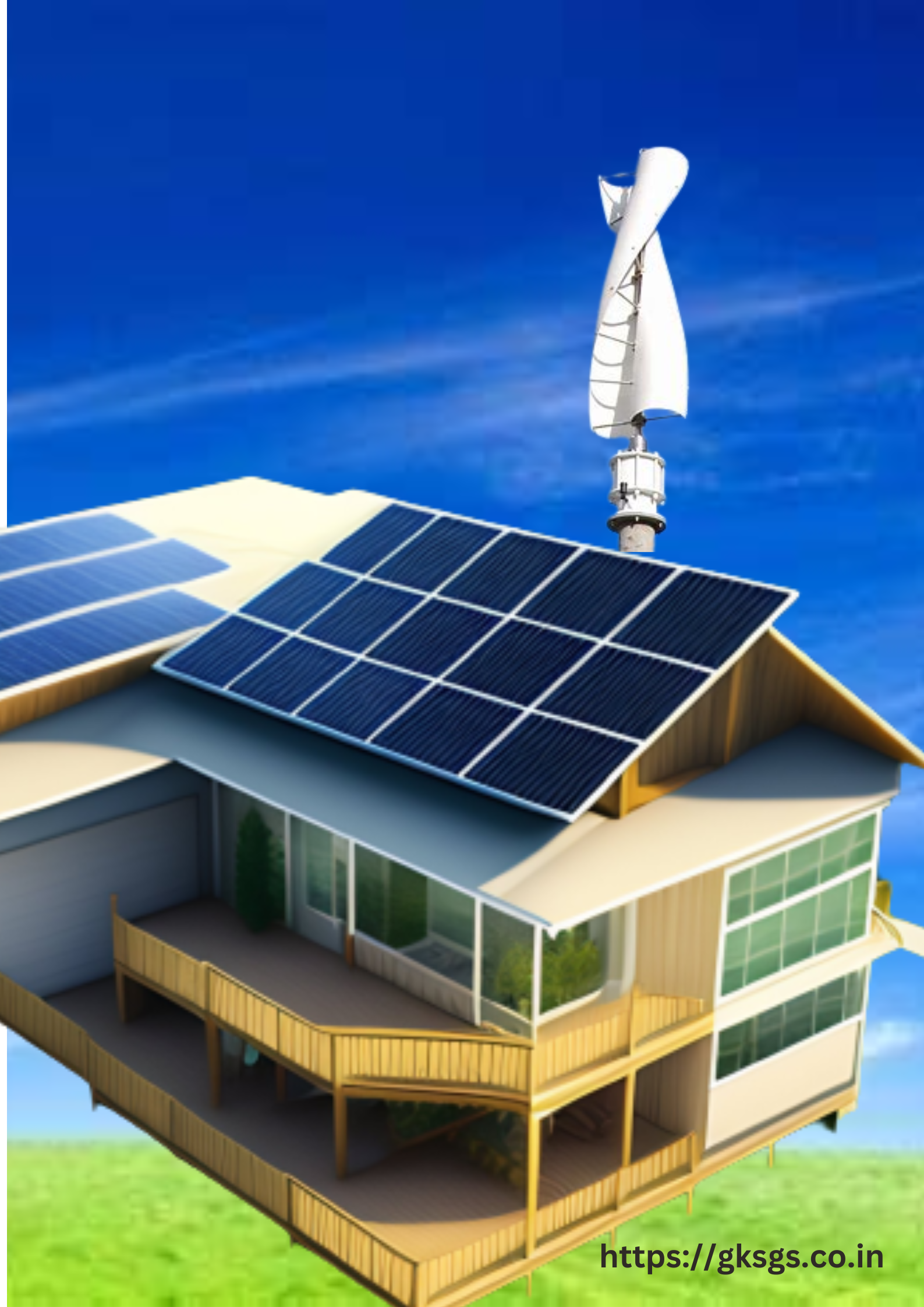
Combining Hybrid Solar PV (photovoltaic) and wind power generating plants in one place. This is known as hybrid renewable energy system. Combining these two renewable sources can have many benefits, including increasing energy production as they can complement each other. Solar panels generate electricity during the day when the sun is shining, while wind turbines can generate electricity during the day and night when the wind is blowing.
Hybrid ( Wind & Solar Power) renewable systems can increase the overall reliability and efficiency of power generation, making it a popular choice for some renewable energy projects. However, factors such as site suitability, grid integration and project design must be considered to ensure the successful integration of both solar and wind power generation.
Supplementary energy generation: Solar panels generate electricity when the sun is shining, especially during the day, while wind turbines can generate electricity during the day and night when the wind is blowing. Combining these Hybrid Wind & Solar Power sources can help ensure more consistent energy production, reducing dependence on a single energy source.
Maximized land use: Using the same land for Wind and Solar power generation can maximize the use of available resources and reduce land requirements compared to separate installations for each source.
Grid Integration: A well-designed hybrid system should integrate seamlessly with the local electrical grid. This may involve using inverters and controllers that can manage the variability of Wind and Solar power and feed it efficiently into the electricity grid.
Energy storage: Incorporating energy storage such as batteries into a hybrid system helps to store excess energy when it is generated and release it when demand is high or when renewable resources are scarce. This improves grid stability and reliability.
Site Selection: Selection of location is important. It should have sufficient solar radiation and consistent wind patterns to make the hybrid system economically viable.
Maintenance and Operations: Proper maintenance and operation of both solar and wind components is critical to ensure the longevity and efficiency of a hybrid system. Monitoring systems can help detect problems and fix them quickly.
Financial considerations: Evaluate the financial feasibility of the project, including equipment, installation, maintenance costs, and potential government incentives or subsidies for renewable energy projects.
Environmental Impacts: Assess the environmental impacts and benefits of hybrid systems such as reduced and reduced greenhouse gas emissions.
benefits and drawbacks of wind turbines & Solar Power plant including their efficiency, cost, and environmental impact.
| Wind | Solar | |
| Benefits | Clean and renewable energy source: Wind turbines produce no emissions during operation, making them a clean and renewable energy source. | Clean and renewable energy source: Solar power plants produce no emissions during operation, making them a clean and renewable source of energy. |
| Benefits | Low operating costs: Once a wind turbine is installed, the only major cost is maintenance. Wind is a free fuel source, so there are no fuel costs associated with wind power. | Modular and Scalable: Solar power plants can be built in a variety of sizes, from small rooftop installations to large utility-scale projects. |
| Benefits | Job creation: The wind industry supports a large number of jobs in generation, installation and maintenance. | Low maintenance cost: Solar panels require very Low maintenance. |
| Benefits | Land use compatibility: Wind turbines may be located on land unsuitable for other uses, such as grazing land or agricultural land. | No Fuel Costs: The sun is a free fuel source, so there are no fuel costs associated with solar power |
| Drawbacks | Intermittent: Wind is not always available, so wind turbines do not always generate electricity. This can be addressed by using other sources of energy such as solar energy to supplement wind energy. | Intermittent: Solar energy is available only when the sun is shining. This can be addressed by using battery storage to store solar energy for use at night or during periods of low sunlight. |
| Drawbacks | Visual impact: Wind turbines can be seen from a distance and some people find them unsightly. | Land Use: Solar power plants require a large amount of land. |
| Drawbacks | Noise pollution: Wind turbines can generate noise, which can be a nuisance to nearby residents. | Cost: The upfront cost of solar power is still relatively high. |
| Impact on wildlife: Wind turbines can pose a threat to birds and bats. | ||
| Efficiency | The efficiency of a wind turbine is measured by its capacity factor, which is the percentage of time the turbine is actually generating electricity. The average efficiency factor of wind turbines in the United States is about 35%. | The efficiency of a solar panel is measured by its conversion efficiency, which is the percentage of sunlight that is converted into electricity. About 20% is the typical conversion efficiency for solar panels. |
| Cost | The cost of wind energy has fallen significantly in recent years. The average cost of wind power is now about $0.06 per kilowatt-hour (kWh). | The cost of solar power has declined significantly in recent years. The average cost of solar power is now about $0.13 per kilowatt-hour (kWh). |
| Environmental impact | impact on the environment The ecology is hardly impacted by wind turbines. The main environmental impact of wind turbines is visual impact. Bats and birds may potentially be in danger from wind turbines. | Solar power plants have a minimal negative effect on the environment. The main environmental impact of solar power plants is the use of land. |
When the sun is shining and the wind is blowing, Wind and Solar Power System will generate electricity to power your home or business. The battery will be used to store any extra energy. At night or when the wind is not blowing, the batteries will power your home or business. If the battery runs out of power, you will automatically draw power from the utility grid.

Kindly check the following requirement
Wind turbine
Anemometer: Measures wind speed and direction.
Wind turbine blades: Convert wind energy into mechanical energy
Rotor: Rotates the wind turbine blades
Nacelle: Houses the generator and other components.
Tower: Supports the nacelle and wind turbine blades.

Solar panel
Solar panels: Convert sunlight into electrical energy.
Mounting system(Fabrication): Holds the solar panels in place.
Power electronics
Charge controller: Regulates the flow of electricity from the wind turbine and solar panels to the batteries.
Dump Load Control: This feature prevents the battery from overcharging and diverts excess power to a dump load, such as a resistor bank.
Inverter: Converts direct current (DC) electricity from the batteries to alternating current (AC) electricity.
Battery bank: Stores electricity for later use
Grid connection
Net Metering and protection equipment: Measures and monitors the flow of electricity to and from the grid.
Disconnect switch: Isolates the power plant from the grid in case of an emergency.
Optional components
Energy management system: Optimizes the performance of the Wind, Solar Power Systems and monitors energy consumption.
Battery backup system: Provides backup power in case of a grid outage.
Here are some additional things to keep in mind when installing Wind & Solar Power Systems combined with utility power:
Siting: It is important to carefully consider the siting of your Wind Turbines & solar panels. Solar panels should be installed in a location where they will receive maximum sunlight. Wind turbines should be installed where they will receive maximum wind.
·Storage: Hybrid systems include batteries to store excess electricity for use at night or when there is no wind. Batteries can be expensive, but they can make your system more reliable and independent.
Permits: In some areas, you may need a permit to install a wind turbine.
Net Metering: Net metering is a billing arrangement that allows you to sell excess electricity back to your utility company. Net metering is available in most parts of the Country, but specific terms and conditions vary by state.
hybrid Wind & solar Power system offer a compelling solution for sustainable, reliable, and cost-effective power generation. By considering this option, individuals and businesses can take an active role in addressing energy and environmental challenges while reaping the rewards of energy efficiency, economic savings, and a reduced carbon footprint.
If you have questions about installing a Hybrid Wind & solar Power system combined with utility power, you should consult with a qualified solar installer.
You may like : Small Wind Turbines: A Clean Energy Solution for Your Home/Office – gksgs.co.in
Hybrid Solar Systems: The Future of Off-Grid Power Solutions – gksgs.co.in
or visit @ https://gksgs.co.in
